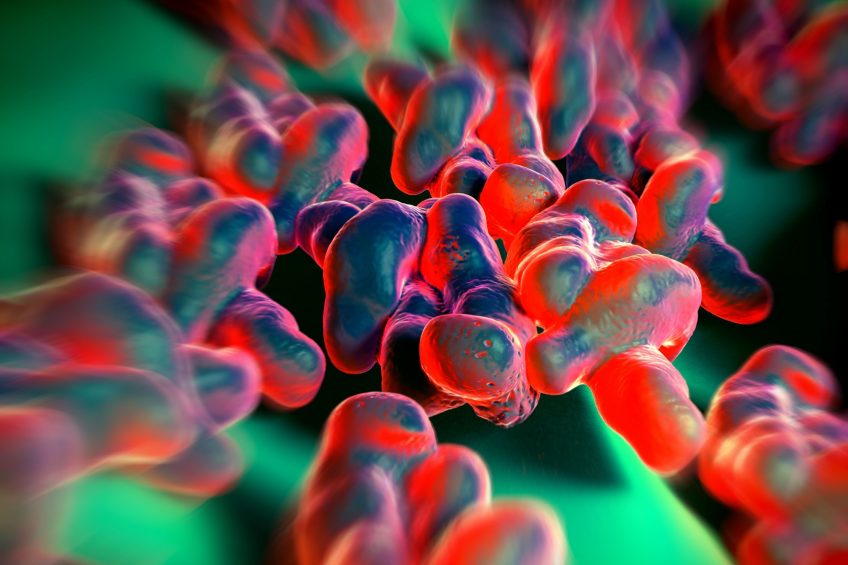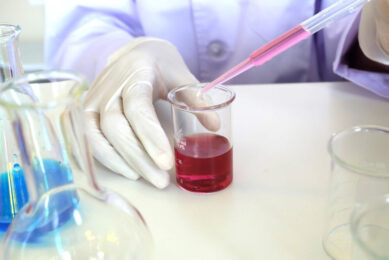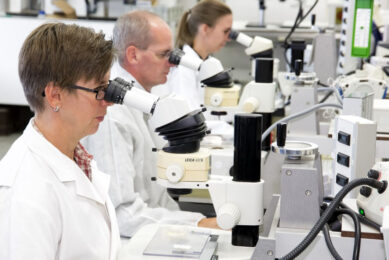Biosecurity against antibiotic resistance

In the battle against antibiotic resistance, greater emphasis should be placed on disease prevention, which includes strengthening hygiene and control practices and improving sanitation. In other words – making biosecurity a key element of this fight.
There is considerable debate in veterinary medicine regarding the use of antibiotics in animals raised for human consumption (food animals). The potential threat to human health resulting from inappropriate antibiotic use in food animals is significant, as pathogenic-resistant organisms propagated in these livestock are poised to enter the food supply and could be widely disseminated in food products.
The different applications of antibiotics in food animals have been described as therapeutic use, prophylactic use, and subtherapeutic use. Definitions of each type of antibiotic use vary, and the approaches are often applied concurrently in livestock populations. For example, 16% of all lactating dairy cows in the US receive antibiotic therapy for clinical mastitis each year, but nearly all dairy cows receive intramammary infusions of prophylactic doses of antibiotics following each lactation to prevent and control future mastitis—primarily with penicillins, cephalosporins, or other beta-lactam drugs. Similarly, 15% of beef calves that enter feedlots receive antibiotics for the treatment of clinical respiratory disease, but therapeutic antibiotic doses are also administered to 10% of apparently healthy calves to mitigate anticipated outbreaks of respiratory disease. Approximately 42% of beef calves in feedlots are fed tylosin—a veterinary macrolide drug—to prevent liver abscesses that negatively impact growth. Around 88% of growing swine in the US receive antibiotics in their feed for disease prevention and growth promotion purposes, commonly tetracyclines or tylosin.
Optimal environment for bacteria
In animal production systems with a high density of animals or poor biosecurity, development and spread of infectious diseases is favoured, which leads more frequently to antimicrobial treatment and prevention of those diseases. This provides favourable conditions for selection, spread and persistence of antimicrobial-resistant bacteria. Some of these bacteria are capable of causing infections in animals and if zoonotic also in humans. Bacteria of animal origin can also be a source for transmission of resistance genes to human and animal pathogens. In many cases, disease can be prevented by good husbandry, good environment and hygiene, rather than by routine prophylactic use of antibiotics. Positive measures that can reduce disease in farmed animals include:
- Switching to extensive production systems: High-welfare, free-range and organic systems can achieve higher levels of animal health together with lower levels of antibiotic use than intensive production systems. Recent studies in the UK, Norway and Sweden find that organic dairy farms, where preventive antibiotic treatment of dry cows is less likely to be used, achieve the same level of mastitis control as conventional farms that typically use routine prophylactic antibiotics.
- Reducing stress: Stress can lead to an animal’s immune system being compromised whereas reducing stress can promote improved immune competence and the ability of animals to fight disease.
- Good weaning practice: If too early or poorly managed, weaning can cause stress and can lead to disease. Later weaning helps to ensure that animals are more independent of their mother nutritionally, immunologically and physiologically, which reduces stress and risk of scouring.
- Keeping stocking densities low and avoiding excessive herd or flock sizes: Overcrowding and very large numbers of animals facilitate disease transmission and the mutation of pathogens to become more virulent.
One core action that stands above all in terms of preventing antibiotic resistance – is establishing a better and healthier environment through improved hygiene and good biosecurity practices. Biosecurity means taking steps to ensure good hygiene practices are in place so that the risk of a disease occurring or spreading is minimised. These measures should be practiced at all times and not just during a disease outbreak.
Cost-effective disinfection protocols
Good biosecurity requires a disinfection protocol. When a protocol is implemented correctly, it can be a cost-effective method of reducing pathogenic organisms and is an important step in any biological risk management program. Every biosecurity protocol needs to contain a correctly selected hygiene and disinfection agent. Stalosan F, manufactured by Vitfoss, is a powder disinfectant that provides sustained suppression of pathogens in livestock and poultry production and animal housing facilities. The product is a fine pink powder whose existing composition is based on synergism, where 2 or more ingredients reinforce each others effect.
Numerous studies indicate that this product has a wide spread antimicrobial mode of action and prevents the proliferation of pathogenic micro-organisms. The mode of action does not discriminate between different types of bacteria, viruses, fungi and parasites. The product has proven efficacy against 2 of the most aggressive and dangerous pathogens affecting both – humans and animals and transferring antibiotic resistance across the globe – Campylobacter jejuni and MRSA Staphylococcus aureus ATCC 33592 (Tables 1 and 2). Besides the efficacy of the material against Campylobacter jejuni and MRSA Staphylococcus aureus, the proven suppressing power of the product against other very important foodborne pathogens such as Salmonella and E. coli makes it a valuable tool in the fight against antibiotic resistance which the bacteria indicated above may possibly transfer from animals to humans through the food chain.
The disinfectant material has been proven effective to reduce significantly ammonia formation, absorb excessive moisture, decrease the pH-value of the litter, contribute to significantly better air quality through minimising the harmful emissions in the air and improve the overall performance of the animals. When applied weekly the product can improve the biosecurity status of the animals and minimise the disease spreading incidence. At the same time the product is completely harmless for humans and animals which makes the material a very good option to be applied at the same time when animals or birds are present in the barns.
Several trials have proven the fact that when properly applied the product reduces the need for additional antibiotic treatment hence in a long term projection we can hypothesise that it might be a valuable tool in the fight against limitation of antibiotic resistance created from the excessive utilisation of these substances. As the trial in Table 3 illustrates, Stalosan F application resulted in a lower percentage of medicated piglets. In other words – less antibiotics have been utilised and despite that better results have been achieved.












